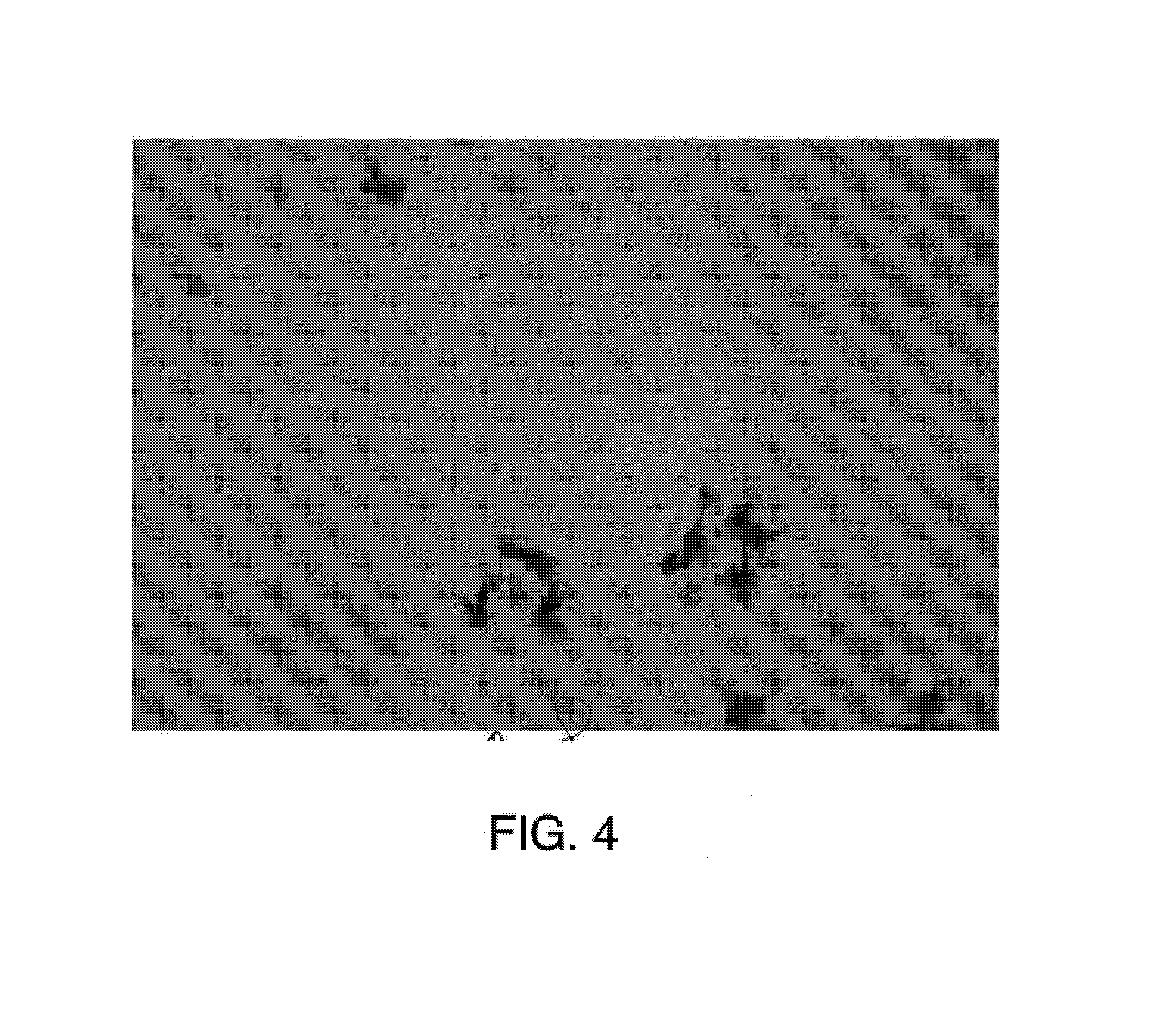Method and composition for treating cancer using cellular organelle crystallizing agents
a technology of organelle crystallization and cell, applied in the field of cellular organelle crystallization agents, can solve the problems of no method or agent reported, drug variety, and limited treatment options,
- Summary
- Abstract
- Description
- Claims
- Application Information
AI Technical Summary
Benefits of technology
Problems solved by technology
Method used
Image
Examples
example 1
Effect of Crystallizing Agent on 91 Gliosarcoma Tumor Cells
[0068]Tumor cells were exposed to escalating concentrations of SDH substrates, tetrazolium red (TR) and tetrazolium violet (TV), respectively. The tumor cells (4000) were seeded in a 48 well plate one day before treatment was administered. The concentrations of TR and TV were the same, as indicated in FIGS. 1A and 1B, respectively. The concentration was 250, 50, 25, 5, and 0 μg / ml. Tumor cell number was calculated one day post treatment. Surviving tumor cell numbers are shown in FIGS. 1A (treated with TR) and 1B (treated with TV), respectively. These data demonstrate that tetrazolium salts, the substrates of SDH are effective, in a dose dependent manner, in killing tumor cells.
example 2
Synergistic Effect of Crystallizing Agent and Chemotherapeutic Agents on 91 Gliosarcoma
[0069]Crystallizing agents and various chemotherapeutic agents were tested, individually and in combination, on 9 L gliosarcoma tumor cells. Treatment was administered one day after the cells (4000) were seeded in a 48 well plate, with the number of cells counted in 6 hours. MTT at 10 μg / ml was tested with cisplatin and BCNU. MTT at this dose significantly (p<0.005) enhanced the cytotoxic effects of cisplatin (10 μg / ml), and BCNU (25 μg / ml) (FIG. 2). All data represent the mean of 3 to 4 repetitions.
[0070]As is evident from FIG. 2, the crystallizing agent and chemotherapeutic agents are effective in inhibiting tumor cell growth when applied individually. However, the combination of a crystallizing agent and chemotherapeutic agents is demonstrated to be synergistic.
example 3
In Vivo Antitumor Activity of Crystallizing Agent
[0071]Small cell lung Cancer (SCLC) cells (2×105) were injected subcutaneously in rats to test the in vivo cytotoxicity and efficacy of tetrazolium salts. Tetrazolium salts in polylactic acid polymer were implanted in rats with 14 day established 9 L gliosarcoma in the right flank area. Treatment was initiated as follows: G-1, tumor control; G-2, TR in polymer at 2.5 mg / kg; G-3, TV in polymer at 2.5 mg / kg; and G-4, MTT 2.5 mg / kg. The tumor volume was measured on day 60. The tumor size was significantly smaller (p3). See Table 1 and FIG. 3.
[0072]
TABLE 1Group (n)TreatmentTumor size (cm3)P values1 (6)—88.5 ± 23 cm3 2 (6)TR, 2.5 mg / kg44 ± 5.3 cm33 (6)TV, 2.5 mg / kg21 ± 2.3 cm34 (6)MTT, 2.5 mg / kg24 ± 3.6 cm3
PUM
| Property | Measurement | Unit |
|---|---|---|
| weight | aaaaa | aaaaa |
| concentration | aaaaa | aaaaa |
| resistances | aaaaa | aaaaa |
Abstract
Description
Claims
Application Information
 Login to View More
Login to View More - R&D
- Intellectual Property
- Life Sciences
- Materials
- Tech Scout
- Unparalleled Data Quality
- Higher Quality Content
- 60% Fewer Hallucinations
Browse by: Latest US Patents, China's latest patents, Technical Efficacy Thesaurus, Application Domain, Technology Topic, Popular Technical Reports.
© 2025 PatSnap. All rights reserved.Legal|Privacy policy|Modern Slavery Act Transparency Statement|Sitemap|About US| Contact US: help@patsnap.com



